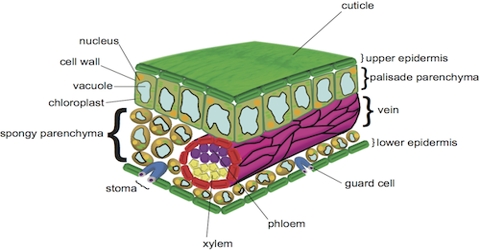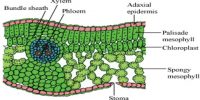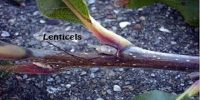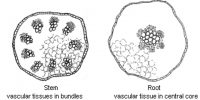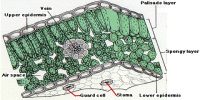Difference between Palisade parenchyma and Spongy parenchyma
Palisade parenchyma is the upper layer of ground tissue in a leaf, consisting of elongated cells beneath and perpendicular to the upper epidermis and constituting the main area of photosynthesis.
- Present in dorsiventral leaves. This layer consists of closely packed cylindrical/rectangular cells.
- Columnar cells without intercellular spaces, compactly arranged. These are perpendicularly elongated parenchymatous cells and are strongly fitted to each other without intercellular spaces.
- Contain more amount of chloroplasts. Cells of the palisade layer contain more chloroplasts than the cells of the spongy mesophyll layer.
- Do not possess the respiratory cavity.
- Present below the upper epidermis. Columnar cells without intercellular spaces, compactly arranged.
- These are there below the upper epidermis in dorsiventral leaf.
- It helps in photosynthesis, while the air pockets in the spongy layer allow the exchange of gases like Carbon Dioxide required for photosynthesis.
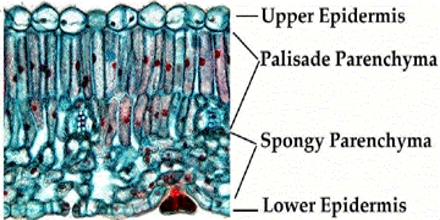
Spongy parenchyma the lower layer of the ground tissue of a leaf, typically containing irregularly shaped cells with relatively few chloroplasts and large intercellular spaces.
- Present in both dorsiventral and isobilateral leaves. This layer has loosely packed cells with many air pockets. These are oval-shaped parenchymatous cells and are loosely arranged with large air chambers.
- Rounded cells with intercellular spaces, loosely arranged. Cells in the spongy layer are rounded in shape.
- Contain less amount of chloroplast. These cells contain few chloroplasts, which are irregularly distributed. Thus, the lower part one for the leaf is less green.
- Possess the respiratory cavity and open to outside through stomata.
- Present below the palisade layer in dorsiventral leaf and between both the epidermis is an isobilateral leaf.
- These are there towards the lower epidermis in dorsiventral leaf. These are multilayers.
- Present below the palisade layer in dorsiventral leaf and between both the epidermis is an isobilateral leaf.
